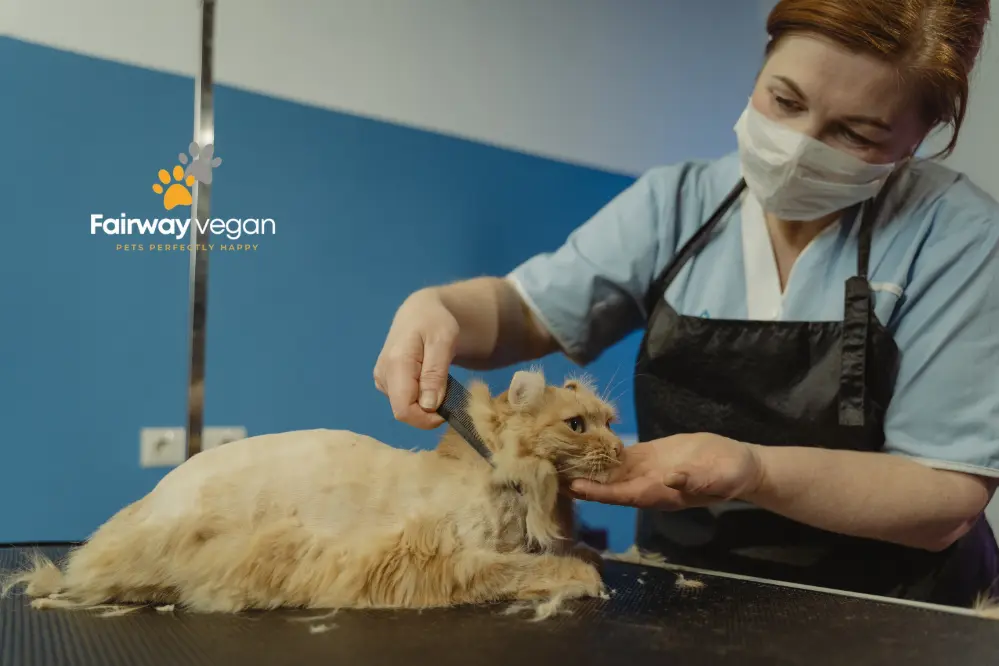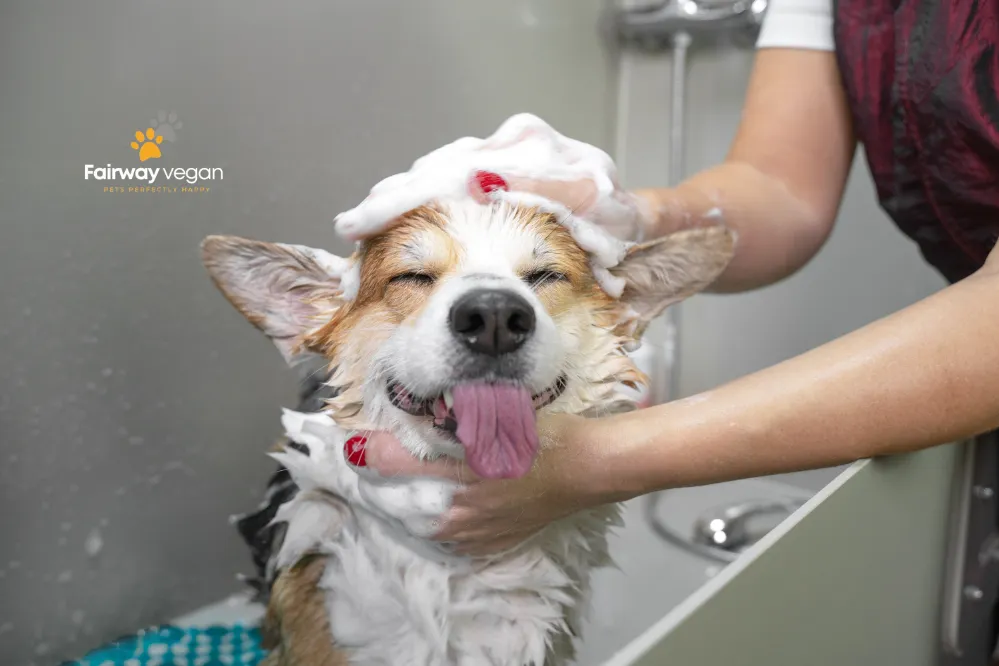
Long-haired cats are wonderful with their fluffy tummies and smooth, lustrous coats. They do, however, also need some more care. Usually, your cat cannot brush all that wonderful hair by herself. To maintain it in peak shape, they need a little assistance. Reading this blog will make you skilled enough to do your long-haired cat grooming at home with the best brushes.
Good long-haired cat grooming also helps your cat be happy and comfortable, reduces hairballs, and promotes healthy skin and coats. This definitive guide will go over the best techniques for grooming your long-haired cat to avoid any common cat behavioral issues.
Categories of Coats To Understand Grooming of Long-Haired Cats
A cat’s breed, genetics, and surroundings will all affect the kind of hair coats they get especially be choosy about cat backpacks. Cats might have many kinds of hair coats listed here:
Short-haired coat
The most often occurring coat type in cats is the short-haired one. This shiny, shining coat lays close to the body and acts as insulation and warmth provider. Among those with short hair coats are the Siamese, Bengali, and Abyssinian breeds.
Coat of Medium Hair
Though not as lengthy as a long hair coat, a medium hair coat is longer than a short hair coat. This kind of coat requires little care to avoid matting and tangles; its soft, fluffy feel is great. Commonly having medium hair coats include the American Shorthair, Turkish Van, and Burmese breeds.
Long Coat for Hair
The longest kind of coat a cat has is a long-haired one, hence frequent brushing is necessary to maintain its smooth and lustrous state. The breed will determine whether this kind of coat is flowing, slick, or thick. Among those often with long hair coats include the Persian, Maine Coon, and Ragdoll breeds.
Curly Hair Coat
Though it is rare, curling hairs are a feature of certain cats. Tight, delicate, whippy to the touch corkscrew curls abound in this kind of garment. Breedings for curly hair coats include Devon Rex and Cornish Rex.
Coat without Hair
Few kinds of cats have the unusual coat type known as a hairless coat. There is absolutely no hair on this kind of garment, hence the skin is left unprotected to the surroundings. To keep their skin moistened and protected, hairless cats need particular attention. Commonly occurring hairless breeds include Peterbald and the Sphynx.
Best Tips For Grooming Your Long-Haired Cat

Having a long-coated cat implies more shedding and more care. Especially crucial is helping these animals with grooming.
Brushing the Coat of Your Cat
Long-haired cat grooming revolves mostly on regular brushing. Daily brushing distributes natural oils, helping fend against mats and tangles by stripping out stray hair. To softly groom your cat’s hair, run a slicker brush available on Fairway’s blog on best chewy products, or comb with long teeth. Working your way down to the undercoat from the top layer, start at Take great care not to pull on any knotted hair or knots.
Whining Your Cat’s Hair
If your cat has very long hair, you may have to cut it to prevent matting and tangles. First, trim the mat-prone areas—such as the legs and the area under the abdomen. To prevent faeces from sticking to your cat’s fur, you could also choose to clip her hair around the anus. If you are not sure how to cut your cat’s hair, see a veterinarian or groomer for help.
Long-haired cats may not require a bath as regularly as short-haired cats, but they still may sometimes need one. Bathe your cat with a cat-specific shampoo and warm water; be careful not to get water in their eyes or ears. To eliminate all the shampoo, give your cat a good rinse; then, wrap it in a towel to dry. To fast dry your cat’s hair, run it under a low heat drier.
Cleaning Your Cat’s Ears
Feline friends should be routinely cleaned as they are more prone to ear pollution. Wipe the inside of their ears carefully with a soft cloth dabbing a little bit of ear cleanser. One should be careful not to injure their ear canal by inserting anything.
Attaching Your Cat’s Nails
Long hair in cats is also more prone to become tangled around their paw pads, hence regular nail cutting is really necessary. Use cat-specific nail clippers and take great care not to damage the vein inside the nail—the quick.
Flushing Your Cat’s Teeth
For cats as much as for people, dental hygiene is vital. Using a soft-bristled toothbrush and toothpaste designed for your cat, routinely clean their teeth. Should your cat object to tooth brushing, think about dental treats or toys designed to assist clean their teeth.
Examining Your Cat’s Skin Look for peeling, redness, or inflammation on your cat. These should be seen by a veterinarian as signs of either skin allergies or parasites.
Taking Care of Your Cat’s Tail
Many times, cats have a thick, hairy tail that calls for additional care. Keep the fur at the base of the tail neat and free of debris; gently untangle any knots with a hair comb or brush.
Applying Cat-Friendly Grooming Products
Use only cat-specific products safe and benign for your long-haired cat’s skin and coat while tending to it. Human shampoos and conditioners should be avoided as they could irritate skin and dehydrate it.
Using Treats as Motivational Tool for Positive Action
Particularly if they are not used to it, some cats may be hesitant to groom. Throughout grooming sessions, use goodies to reward appropriate behaviour. After every successful grooming session, reward your cat; then, over time, progressively increase the length and frequency of grooming sessions.
What Not to Do During Long-Haired Cat Grooming

Long-haired cat grooming needs both patience and meticulous attention to detail. Here are some things to steer clear of when grooming to keep the cat comfortable or free from injury:
Pulling or tugging through hair
Mostly if the cat’s hair is tangled or matted, pulling or tugging on it may cause damage and discomfort for the creature. When brushing or combing the cat’s hair, be careful not to yank on any mats or knots.
Making Use of Strong Chemicals
Choose a gentle, cat-specific shampoo and rinse the cat completely to eliminate any remaining chemicals on the coat. Steer clear of strong chemicals or shampoos that can dry out the cat’s skin or irritate the eyes and ears.
Not Cutting Enough Hair
Although cutting the cat’s hair may help to reduce matting and tangles, try not to remove too much as this might expose the cat’s skin to cold or sunburn. harm only the required areas—that is, the anus, legs, and paw pads—and use great caution not to harm the skin.
Restraint or Overhanding the Cat
Stress and pain might result from overhanding or restraint of the cat while grooming. Let the cat roam free and take breaks if needed to help to avoid stress or anxiety.
Final Thought
The general health and well-being of your long-haired cat depend critically on their grooming. Important habits to maintain your cat companion healthy and happy include regular brushing, trimming, bathing, ear cleaning, nail cutting, teeth brushing, skin checking, and tail grooming. See a groomer or veterinarian if you’re not sure about any element of tending to your long-haired cat. Following these rules helps you to make sure your long-haired cat remains gorgeous, healthy, and happy for many years to come.
Q&Rs
How can I stop hairballs from coughing up from my cat?
Key is regular brushing. Daily brushing helps remove extra fur, therefore minimising the quantity your cat consumes while self-grooming and hence lowers the chance of hairballs developing.
How frequently should I tend to my long-haired cat?
Daily grooming of your long-haired cat is advised to avoid matting and knots. Frequent grooming maintains the coat in good condition and helps disperse natural oils.
For grooming long-haired cats, which equipment work best?
Usually advised are metal comb, slicker brush, and dematting equipment. For their cats, some owners feel that products like the Zoom Groom are useful and fun.
Recent Comments

Dog Grooming Made Easy: Must-Have Tools, Costs, and Pro Tips!

How to Remove Pet Hair from Furniture: 5 Hacks That Work

How To Groom a Dog At Home For Beginners

The Ultimate Guide to Mobile Pet Grooming: Prices, Services, and Benefits

7 Vet-Approved Homemade Dog Food Recipes for a Healthier Pup

How to Treat My Cat Eye Infections at Home

Displacement Behavior in Dogs; 5 Signs and Ways to Respond
